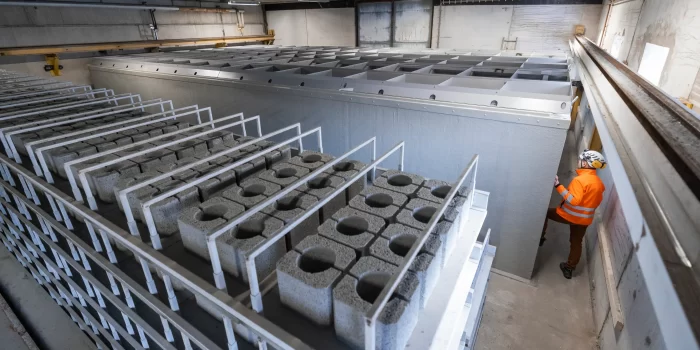A ground-breaking discovery revealed by MIT researchers has the potential to completely change the way energy is stored. They discovered that concrete can self-assemble into an energy-storing supercapacitor capable of powering houses or quickly charging electric cars by combining cement and carbon black with water. By doing away with mesh electrodes and allowing the carbon black to construct its own connected electrode structures throughout the curing process, this new research advances earlier work on using concrete for energy storage.
The magic happens due to the reaction between water and cement in concrete. As the concrete hardens, water forms a network of branching channels, and carbon black naturally migrate into these channels. This creates carbon electrodes with an incredibly large surface area throughout the concrete. Once the concrete is bathed in a standard electrolyte, like potassium chloride, these carbon electrodes function as the plates of a supercapacitor. Supercapacitors offer high power density and quick charging and discharging capabilities compared to standard lithium batteries.

While there is a tradeoff between energy density and concrete strength when adding more carbon black, the energy-storing potential is impressive. A 1,589-cu-ft (45 m3) block of nanocarbon black-doped concrete can store around 10 kWh of electricity. This amount is sufficient to cover approximately a third of the power consumption of the average American home or significantly reduce grid energy bills when combined with a decent-sized solar rooftop array.
What makes this technology even more promising is its scalability. The MIT team has tested the concrete supercapacitors at various scales, from tiny 1-volt supercapacitors to blocks the size of car batteries. The team is now aiming for a 1,589-cu-ft, 10-kWh version for larger-scale demonstrations.
Beyond its potential application in homes, this energy-storing concrete can be utilized in various infrastructure projects. Pairing it with roadside solar panels and inductive charging coils could lead to super-quick, drive-through wireless EV charging roads. Additionally, the concrete supercapacitors may complement slower-moving chemical batteries in large grid-based energy storage facilities, enabling both quick jolts of power and longer-duration contributions at lower power levels.

There are still some uncertainties to be resolved, though. The concrete’s ability to survive outside elements and whether it can be poured on-site for self-assembly in place are still unknowns. Understanding how these concrete supercapacitors should be linked and handled is also crucial for safety reasons.
Overall, this amazing finding opens up a wide range of options for energy storage utilizing concrete, a substance that is frequently employed in a variety of buildings. As research and development proceed, we might see a time when our infrastructure and buildings serve as effective and sustainable energy storage solutions in addition to their current roles as functional structures. Significant progress toward a greener and more sustainable future might be made by reducing our reliance on conventional electricity sources and reducing environmental effects.


